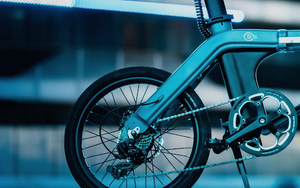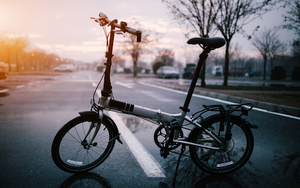Are Electric Bikes OK in the Rain?
Oct 15, 2024
As the popularity of electric bikes continues to rise in the UK, many riders find themselves questioning the implications of riding in adverse weather conditions, particularly rain. With adequate precautions and knowledge, riding an electric bike in wet weather can be both safe and enjoyable. This article explores the relationship between electric bikes and rainy conditions, offering insights into performance, safety, care, and legal considerations.
- Understanding Electric Bikes and Weather Conditions
- The Impact of Rain on Electric Bikes
- Protecting Your Electric Bike from Rain Damage
- Riding Techniques for Wet Weather
- Legal and Insurance Considerations
- Conclusion
Understanding Electric Bikes and Weather Conditions
The Basics of Electric Bikes
Electric bikes, or e-bikes, are bicycles equipped with an electric motor that assists the rider's pedalling. They come in various forms, from compact city bikes like the Ado Air A20S to robust mountain models, like the Touroll J1 Trekking E-Bike, all designed to provide a more accessible and efficient ride. The enhanced speed and reduced effort offered by e-bikes make them an appealing option for commuters and recreational cyclists alike.
Typically, e-bikes have components sensitive to environmental conditions, including the battery, electric motor, and wiring. Therefore, understanding how varying weather conditions can affect these components is crucial for any rider.
How Weather Affects Different Types of Bikes
Weather impacts all bikes to some extent; however, electric bikes introduce additional concerns due to their electrical systems. Rain can lead to decreased traction on slippery surfaces, increased stopping distances, and potential electrical issues if water seeps into sensitive components.
Despite this, many e-bikes are designed with weather resistance in mind. Higher-end models often include features like sealed battery packs and corrosion-resistant materials, aiming to minimise the risks associated with wet conditions. Riders should still be cautious and informed when planning a journey in the rain.

The Impact of Rain on Electric Bikes
How Rain Affects Electric Bike Performance
Rain can significantly impact the performance of electric bikes. The most immediate effect is on the tires: wet roads reduce grip, increasing the likelihood of skidding. Riders may also experience diminished responsiveness in braking systems, especially if the brakes are not specifically designed for wet conditions.
Battery performance may also be affected; cooler temperatures often reduce battery life and efficiency. Riders might find that their e-bike doesn’t deliver the same range in wet and cold weather compared to dry conditions. Consequently, it’s wise for riders to plan their journeys accordingly, ensuring they have enough charge for their return trip.
Safety Concerns When Riding Electric Bikes in the Rain
Riding in rain increases several safety concerns. Reduced visibility, both for the rider and for other road users, can pose a significant hazard. Additionally, wet surfaces can hide potholes or debris, making it essential for riders to remain vigilant.
It is also important to wear appropriate gear, such as waterproof jackets and reflective clothing, which can enhance visibility and comfort. Riders should be aware of their limits and avoid risky manoeuvres, such as sharp turns or sudden stops, which can lead to loss of control. In just one year, electric bike accidents have increased by 21%, with at least 233 deaths over 5 years.

Protecting Your Electric Bike from Rain Damage
Maintenance Tips for Rainy Weather
To prolong the lifespan of an electric bike in wet conditions, regular maintenance is crucial. After riding in the rain, it’s important to dry off the bike with a soft cloth, paying close attention to the electrical components. Ensure that the battery and motor housings are free from moisture build-up by regularly inspecting and cleaning these areas.
Additionally, consider applying waterproof sprays or protective coverings to vulnerable components, which can help create a barrier against the elements. Regularly checking and lubricating the chain and brakes can also enhance performance during and following wetter rides.
Essential Gear for Protecting Your Electric Bike
Investing in quality protective gear is another vital step in caring for your electric bike in rainy conditions. A good-quality rain cover can shield the bike from downpours when parked, and additional accessories like mudguards can prevent water from splashing onto energised parts.
Riders may also wish to consider waterproof panniers for transporting belongings, preventing both damage to items and maintaining balance on the bike. Proper gear can mitigate many adverse effects of rain, ensuring an enjoyable ride.

Riding Techniques for Wet Weather
Tips for Safe Riding in the Rain
Riding safely in the rain involves adjusting techniques and being mindful of various factors. Always wear a helmet and reduce speed when riding on wet roads as this increases your control over the bike. Maintaining a safe distance from other road users is equally important, allowing ample reaction time should an emergency arise.
Lastly, avoid areas known to accumulate water, such as potholes and road fittings that can be slick when wet. Prioritising caution reduces the likelihood of accidents and enhances the overall riding experience.
Adjusting Your Riding Style for Wet Conditions
Riders should adapt their riding style to accommodate the conditions. This includes gentle acceleration and braking, as abrupt movements can lead to a loss of traction. Instead of standard cornering methods, consider leaning your body into turns, allowing for more controlled manoeuvring.
Using the bike’s electric assistance judiciously can also help manage speed and prevent skidding. Practising these techniques can improve rider confidence and safety during wet weather conditions.

Legal and Insurance Considerations
Legal Restrictions on Riding Electric Bikes in the Rain
In the UK, there are few specific legal restrictions regarding riding electric bikes in adverse weather, including rain. However, riders must adhere to the Highway Code and be mindful of local regulations. It is essential to ensure your electric bike complies with legal specifications, particularly concerning motor power and speed limits.
As weather conditions fluctuate, riders are advised to stay updated on any temporary restrictions that might arise from local authorities during extreme weather events.
Insurance Coverage for Weather-Related Damage
When it comes to insurance for electric bikes, it’s essential to check whether your policy covers weather-related damage. Some insurers offer specific policies that protect against incidents attributed to adverse weather conditions.
Riders should consider comprehensive insurance, which encompasses theft, accidental damage, and other variables associated with riding in the rain. Understanding your coverage can provide peace of mind, allowing you to cycle confidently in less-than-ideal weather.

Conclusion
Riding an electric bike in the rain does present challenges, but with proper precautions and maintenance, it can be accomplished safely. By understanding the impact of wet conditions, ensuring the appropriate gear is worn, and adapting riding techniques, cyclists can enjoy their rides throughout the year.
For those looking for quality electric bikes and accessories that can handle the unpredictable UK weather, E-Dash offers a variety of options to suit every rider's needs - check them out here.






